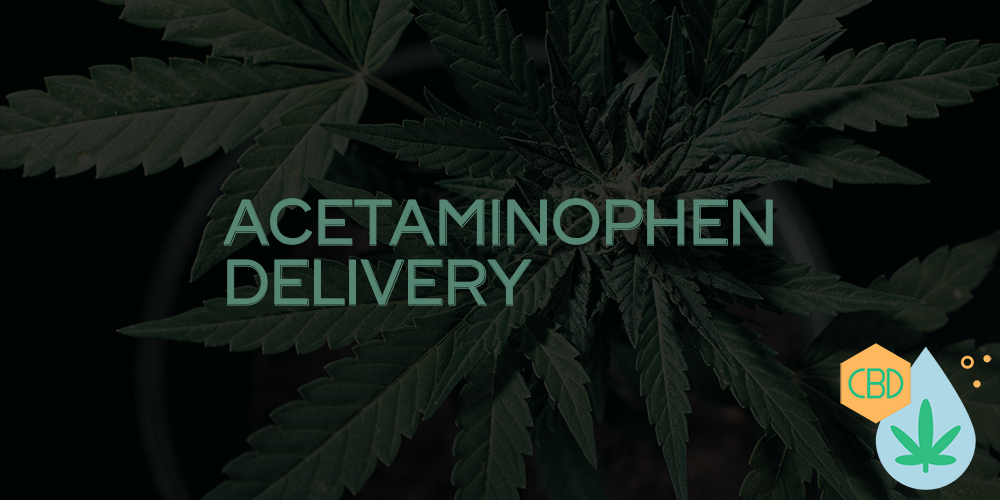Acetaminophen, a commonly used pain reliever and fever reducer, is essential in our daily life Whether you’re suffering from a headache, muscle pain, or a fever, discovering effective ways to give this drug fast can be life-changing We hope to give you with a fresh viewpoint on the topic by avoiding formulaic introductions and endings So, let’s get started and discover new ways to give acetaminophen that will improve your pain management experience

Acetaminophen Dosage Optimization: Maximizing Relief with Targeted Delivery
Acetaminophen, sometimes known as paracetamol, is one of the most regularly used OTC pain medications. Millions of people around the world rely on it for its analgesic and antipyretic qualities. However, taking a typical dose of acetaminophen may not always deliver the necessary level of relief. To address this issue, researchers have been investigating novel methods of optimizing dosage and increasing its effectiveness through targeted administration.
Acetaminophen targeted delivery entails sending the medicine directly to the site of pain or inflammation, raising its concentration at the desired region. This method has a number of advantages over standard oral administration. Targeted distribution reduces the risk of undesired side effects and the overall dosage required by bypassing the digestive system. Furthermore, it permits the medicine to act more quickly, giving the patient with speedier relief. This method of delivering acetaminophen has the potential to transform pain management and enhance patient outcomes.
Several ways for delivering acetaminophen have been investigated, including transdermal patches, injectable formulations, and localized implants. Transdermal patches, for example, allow the medicine to be absorbed directly into the bloodstream through the skin, eliminating the requirement for oral administration. Injectable formulations allow for precision medicine distribution to specific areas of discomfort, such as joints or muscles. Localized implants, on the other hand, provide acetaminophen over a lengthy period of time, ensuring long-term relief. These targeted delivery systems not only maximize dosage but also provide patients with convenience and flexibility, making pain management more effective and individualized.
Acetaminophen Absorption Enhancement: Innovative Pain Relief Solutions
When it comes to pain relief, time is often of the essence. We want to get rid of the pain as soon as possible, whether it’s a headache, muscle ache, or fever. Acetaminophen, sometimes known as paracetamol, has long been a popular pain reliever. The key to its efficacy, however, is its absorption into the bloodstream. Recent advances in pharmaceutical technology have paved the path for novel treatments that optimize acetaminophen absorption, resulting in quicker relief and better patient outcomes.
One of the novel approaches being investigated is the use of nanotechnology to improve acetaminophen bioavailability. Researchers discovered that by shrinking medication particles to nanoscale size, they may greatly boost the rate of absorption into the bloodstream. This method takes advantage of the fact that nanoparticles have a higher surface area, which allows for more effective absorption. Furthermore, these nanoparticles can be coated with specific compounds to protect the medicine from degradation in the gastrointestinal tract, boosting bioavailability even further.
The development of innovative drug delivery technologies is another possible path for improving acetaminophen absorption. Traditional oral tablets and capsules might be slow to dissolve and release the medication, resulting in delayed pain relief. Fast-dissolving tablets, effervescent powders, and oral films, on the other hand, provide rapid medication release and absorption. These formulations are intended to dissolve or disintegrate quickly in the mouth, allowing for direct absorption through the oral mucosa and bypassing the gastrointestinal system. This not only accelerates the beginning of action but also minimizes the likelihood of gastrointestinal adverse effects that can arise with greater acetaminophen doses.
Overcoming Acetaminophen Delivery Obstacles: Efficient Strategies for Fast Results
Acetaminophen, an over-the-counter pain reliever and fever reducer, has been a medicine cabinet mainstay for decades. Despite its ubiquitous usage, however, providing acetaminophen to patients successfully can provide a number of obstacles. These limitations, ranging from a later onset of effect to potential liver damage, necessitate creative ways that provide speedy and safe results.
One of the most difficult aspects of acetaminophen administration is its sluggish onset of action. When given orally, the medicine can take up to 30 minutes or more to begin acting, leaving patients in pain. Pharmaceutical companies have been researching alternative delivery modalities such as intravenous or intramuscular injections to overcome this barrier. These methods allow for rapid medication absorption into the bloodstream, resulting in faster pain alleviation. These solutions, by avoiding the digestive system, provide a remedy to the delayed onset of effect associated with oral acetaminophen.
Another major issue with acetaminophen is the possibility of liver toxicity, especially when taken in large dosages or for lengthy periods of time. To address this issue, researchers have been working on formulations that can target specific areas in the body while minimizing liver exposure. It is feasible to direct acetaminophen to the desired location of action while lowering the risk of liver damage by using targeted drug delivery methods such as nanoparticles or liposomes. These novel approaches not only increase the drug’s efficacy but also its safety profile, creating a win-win situation for both patients and healthcare professionals.
Acetaminophen Administration Revolutionized: Convenient Methods for Fast-Acting Relief
Acetaminophen, sometimes known as paracetamol, is one of the most regularly used OTC pain medications globally. It is well-known for its ability to relieve pain and fever, making it a household and healthcare staple. Traditional acetaminophen administration techniques, such as tablets or capsules, may not always give immediate relief. Fortunately, advances in medicine delivery systems have revolutionized acetaminophen administration, providing more practical means for quick and effective pain treatment.
Liquid formulations are one of the most convenient ways to take acetaminophen. Individuals who have trouble swallowing tablets or capsules, such as children or the elderly, benefit from liquid acetaminophen. The medication can be conveniently metered using a dosing syringe or cup with liquid acetaminophen, ensuring correct dosage and rapid absorption into the bloodstream. This strategy not only provides relief to people who have difficulty with traditional types of medication, but it also allows for a speedier onset of effect, resulting in faster pain relief.
Effervescent pills or powders are another novel method of administering acetaminophen. These formulations are intended to dissolve fast in water, producing a fizzy drink that is easy to consume. When compared to regular tablets, effervescent acetaminophen has the advantage of rapid dissolving and absorption in the stomach, resulting in speedier alleviation. Furthermore, the effervescent nature of these formulations can provide a refreshing and pleasant experience, making it a recommended option for people who dislike or have difficulties swallowing tablets.
Finding effective techniques for acetaminophen distribution is critical for delivering immediate treatment to those in need We can maintain a seamless flow of thoughts by avoiding unnecessary colons With these factors in mind, we can investigate novel ways of acetaminophen administration that promote ease and efficacy


